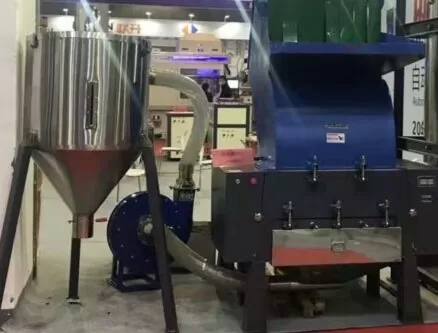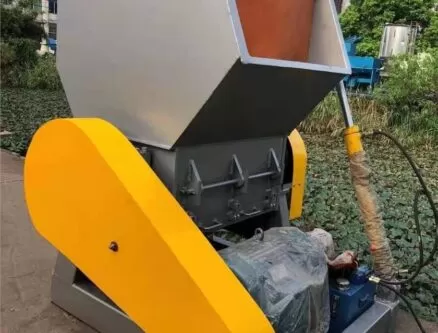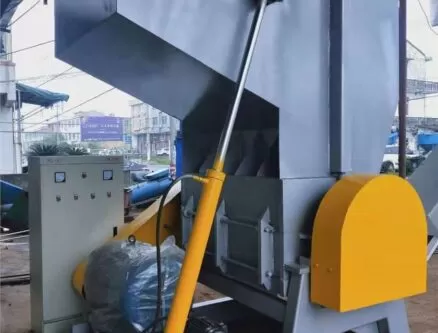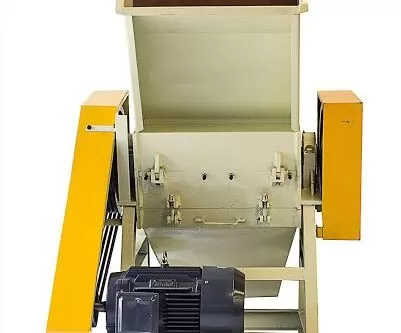Plastic waste is piling up like laundry in a teenager’s room—everywhere, and no one wants to deal with it. Recycling sounds great on paper, but in real operations, it comes down to cost, logistics, and whether it’s actually profitable. Many recyclers ask: Is shredding plastic really worth the investment? Spoiler alert—if you do it right, it absolutely is.
Plastic shredding technology significantly improves resource recovery economics by reducing transportation costs, increasing processing efficiency, and enabling higher resale value for recycled plastic. It’s a key enabler for both environmental impact and business profitability.
I’ve run Amige long enough to say this: if your recycling line doesn’t start with shredding, you’re leaving money—and materials—on the table.

What is plastic shredding technology, and why is it critical?
Plastic shredding is the process of mechanically breaking down plastic waste into smaller, uniform pieces—usually flakes or chips.
Why does that matter?
Because without it, recycling lines are inefficient, expensive, and prone to breakdowns. Large plastic parts—like crates, bumpers, or drums—are space hogs and tough to process in their original form.
Our shredders at Amige chew through them with ease.
Once shredded, plastic becomes easier to wash, sort, melt, or pelletize. More importantly, it becomes more valuable. Clean, uniform flakes fetch a higher price in the resale market. That’s not just theory. It’s backed by real operational math.
How does shredding improve cost-efficiency?
Let’s talk numbers—because that’s where it gets juicy.
First up: volume reduction. Shredding can reduce the volume of plastic waste by 60–80%. That means fewer trips to move the same amount of material. With transportation often accounting for 20–30% of recycling costs, the savings add up fast.
Second: faster downstream processing. Shredded plastic feeds more efficiently into washing, drying, and extrusion lines. That means less downtime, fewer jams, and lower energy usage.
Third: labor savings. Our clients tell us all the time—after installing one of our shredders, they need fewer hands on deck to manually break down big plastic chunks.

What about resale value of shredded plastic?
Now we’re talking cash flow.
Unprocessed plastic scrap is worth peanuts. Often, it’s not even sellable due to contamination or irregular shapes. But once it’s shredded—and ideally washed—it becomes a commodity.
For example:
- Dirty HDPE bottle caps? $50/ton
- Shredded, clean HDPE flakes? $400–$600/ton
That difference is your profit margin. I call it the shred-spread.
At Amige, we’ve helped clients raise their output value by 3x simply by adding an industrial-grade shredder to the line.
Are there differences in shredding technology ROI across industries?
Absolutely. Every industry’s plastic profile is different.
Let’s break it down:
- Automotive industry: Large, rugged plastics. Shredding unlocks recycling of bumpers, dashboards, and molded parts.
- Agricultural sector: Film plastics from greenhouses and irrigation pipes—annoying to process unless shredded first.
- Municipal recycling centers: Wide variety, from toys to detergent bottles. Shredding brings order to chaos.
- Food packaging: With proper sorting and shredding, even multilayer film can be recycled more effectively.
Each case has different ROI dynamics, but shredding almost always turns waste into a resource pipeline.

How do we calculate economic return from shredding equipment?
Let me take off my witty CEO hat for a second and get nerdy.
Here’s the simplified breakdown:
- Initial cost of shredder (e.g., $20,000–$80,000)
- Operational cost (energy, wear parts, labor): about $20–$40/ton
- Savings from transport reduction: $10–$50/ton
- Increased resale value: $200–$500/ton
- Payback period: usually 6 to 18 months, depending on volume
One of our clients processing 15 tons/day hit breakeven in just 7 months. He bought another unit a year later. Guess from whom? Yup—us.
What other benefits come with plastic shredding?
Let’s not forget the intangible wins.
- Cleaner workspace: Big plastic parts are bulky and messy. Shredded flakes? Easy to store and transport.
- Regulatory compliance: Many countries require pre-processing of waste before export or disposal.
- Brand perception: Companies that invest in visible recycling improvements gain points with customers and regulators.
Also, shredding makes it easier to track material flow. That’s a goldmine of data for audits, grants, and carbon reporting.
What does a real shredding operation look like?
Let me paint the picture.
You walk into a recycling plant. The air smells like hope (and slightly burned plastic). In the corner, one of our machines is devouring crates like a hungry rhino.
An operator tosses in a plastic drum. In seconds, it’s reduced to bite-sized flakes.
From there, it’s washed, dried, and bagged—ready for resale or extrusion. Smooth. Efficient. Profitable.
That’s the magic of starting with the shredder.

Are there any risks or drawbacks?
Of course. No machine is perfect—not even ours (although we come close).
Shredders need:
- Regular blade maintenance
- Energy to operate (high power draw at startup)
- Safety precautions (yep, fingers don’t grow back)
We always advise clients to install automatic feeders, overload protection, and dust filters for better performance and operator safety.
And yes, sometimes the odd metal bolt slips in and ruins a blade. That’s why magnets and pre-sort tables are a must.
Conclusion
Plastic shredding isn’t just a technical step—it’s a financial game-changer in resource recovery. Done right, it boosts profits, reduces costs, and helps us clean up the planet one flake at a time.
